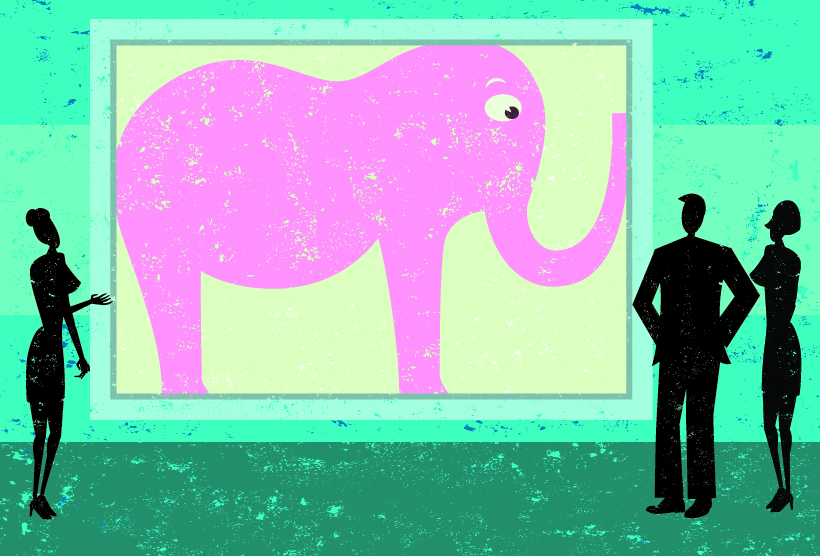As we approach the four month mark of social distancing, business closures, and remote work, some states are “reopening” only to shutter again. Initially, brands rallied and inspired in their messaging around the pandemic, emphasizing that “we’re all in this together.” By now, most folks are experiencing fatigue from drastic life changes. Marketers once again need to pivot in response to a new challenge. This time, they’re negotiating a widening gap between people’s experiences in this unprecedented and uncertain time.
The Elephant in the Room
Marketers need to consider the amount of emphasis to put on novel coronavirus as well as people’s direct experience. “As we’re building creative, it gets down to the tiniest details, whether it’s print, digital, broadcast, an out of home piece, or direct mail,” says Lindsey Hope, an account director at Lift. With uncertainty and varying lead times before a piece goes live, “we even have to consider legal disclaimers,” she adds. Email has become more critical as a marketing channel because of the speed and ease to produce something.
Messaging may focus on how a business is “working to keep their customers safe or how their product helps customers move in a forward direction,” notes Hope. If the benefits of a product or service relate to the pandemic or the business is an “essential” service, that will be the emphasis. The telecoms industry, for example, may elect to take a more direct approach, since their service enables people to connect with work, school, and social networks. They may lift up good value with a particular bundled package or flexibility so the consumer isn’t locked into a particular plan or service. These are all important considerations for consumers during a time of uncertainty.
Some clients may speak directly to COVID-19, while others are much “softer” in their approach, continues Hope. They may focus on saving money, with “messaging elements that speak to COVID without directly saying it,” she adds.
Changing Scale and Ambiguous Timelines
Like most hazards, this pandemic is continually changing and emerging. But unlike disasters such as tornadoes or wildfires, C19 is not localized, with external supporters rallying for support to rebuild. Initially, the global scale of C19, lack of available information, and fear brought people together. Now, we’re “seeing greater variation in what people’s experience is” and that presents a different challenge for marketers, Hope says.
At every level, whether by state or city or by socioeconomic group, there are shifts that marketers are being sensitive to understanding. This is true both personally and professionally. Hope observes that as we move forward, people’s experience is more closely tied to their political views. She is originally from Texas and now lives in NYC. Her family’s experience is “unbelievably different than what my experience has been.” Wearing a face covering may seem perfectly reasonable to a New Yorker. But it can feel like an element of control to someone from Wisconsin who hasn’t yet experienced a lot of devastation.
Companies are trying to stay neutral as tensions rise. As a marketer, Hope faces that “delicate, but fast-paced effort of figuring out what the right formula is.” Brands need to position themselves as being supportive of customers (or potential customers) and to grow business. If a company is national or global, plans may include different messaging for different markets.
Not knowing when things will get back to “normal” adds another layer of complication. Sports programming, for example, is difficult to plan. Hope and her team are constantly consuming information about progress with C19. They then sort that information into viable communications plans for their clients.
Changes in Brand Marketing
The tone of brand marketing, which communicates how a consumer feels about a particular company, product, or service, has shifted. Unemployment is a bigger factor at play here too. Hope highlights a moving spot by web hosting company GoDaddy as an example of brand marketing going more in the direction of support for customers. The ad shows businesses that are closed while the soothing voice of Donald Sutherland reminds viewers of ways to stay open (#OpenWeStand). It is only at the end of the piece when the company logo appears. Fiona Parkin, Executive Creative Director of Advertising at GoDaddy recently appeared in a discussion with Creative Circle about “Turning Your Business Back On.” In it, she shared that, fittingly, she sees her role as both helping small businesses with tactical questions as well as providing a support network.
In the beer and liquor industry, Miller Lite is doing things that are “completely different from anything we’ve seen from them,” Hope says. They shared a video of an empty bar on Twitter, prompting viewers to donate to the Bartender Emergency Assistance Program as a “virtual tip jar.”
Retailer Walmart launched a free virtual summer camp with new activities rolling out daily on their app to keep the kids entertained. Hosted by Neil Patrick Harris and featuring other celebrity guests, it’s playful and fun for their corporate brand. It’s also impressive, Hope notes, how quickly this campaign was pulled together.
Business as Usual
For some companies, marketing remains more or less the same. But new decisions are being made about what to include visually. Hope points out that a lifestyle image of people all together enjoying the big game wouldn’t be relevant at the moment, that it “would be a total miss.” So the image may switch to people video chatting instead.
The good news is that everyone is learning together at the same time. There are no “experts” on this type of crisis communication with the technology that we have available today. But learning from and inspiring each other is critical as we continue onward.
About the author.
Jess Powers writes about marketing, food, and wellness. She has experience in nonprofit communications and emergency management. Follow her @foodandfury.



